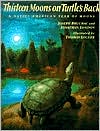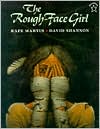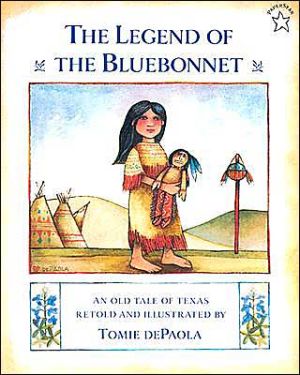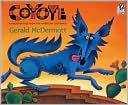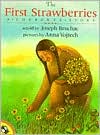Thirteen Moons on Turtle's Back: A Native American Year of Moons
s on Turtle's shell stand for the 13 cycles of the moon, each with its own name and a story that relates to the changing seasons. Joseph Bruchac and Jonathan London collaborate to reveal the beauty of the natural world around us, while Thomas Locker's illustrations honor both Native American legends and the varied American landscape. Full color.\ \ Celebrates the seasons of the year through poems from the legends of such Native American tribes as the Cherokee, Cree,...
Search in google:
s on Turtle's shell stand for the 13 cycles of the moon, each with its own name and a story that relates to the changing seasons. Joseph Bruchac and Jonathan London collaborate to reveal the beauty of the natural world around us, while Thomas Locker's illustrations honor both Native American legends and the varied American landscape. Full color.Publishers WeeklyTo many Native Americans, the 13 cycles of the moon represent the changing seasons and the passage of time. Each moon has its own special name that, while varying among the tribal nations, is consistent with the legend that the 13 scales on Old Turtle's back hold the key to these moons. The authors present 13 poems that take readers through the year, from the ``Moon of Popping Trees''--when the ``cottonwoods crack with frost''--to the ``Big Moon'' of the Abenakis. The book's effective design consists of verses in vertical columns at the left of each spread, with the remainder occupied by Locker's ( Family Farm ; Catskill Eagle ) typically lush artwork. His oil paintings are eye-catching in their depth of color reflecting dramatic seasonal changes. Trees, skies and woodland creatures are rendered in vivid hues that combine to produce an enthralling vision. This unusual and intelligent book is an exemplary introduction to Native American culture with its emphasis on the importance of nature. All ages. (Mar.)
\ Publishers Weekly\ - Publisher's Weekly\ To many Native Americans, the 13 cycles of the moon represent the changing seasons and the passage of time. Each moon has its own special name that, while varying among the tribal nations, is consistent with the legend that the 13 scales on Old Turtle's back hold the key to these moons. The authors present 13 poems that take readers through the year, from the ``Moon of Popping Trees''--when the ``cottonwoods crack with frost''--to the ``Big Moon'' of the Abenakis. The book's effective design consists of verses in vertical columns at the left of each spread, with the remainder occupied by Locker's ( Family Farm ; Catskill Eagle ) typically lush artwork. His oil paintings are eye-catching in their depth of color reflecting dramatic seasonal changes. Trees, skies and woodland creatures are rendered in vivid hues that combine to produce an enthralling vision. This unusual and intelligent book is an exemplary introduction to Native American culture with its emphasis on the importance of nature. All ages. (Mar.)\ \ \ \ \ Children's Literature\ - Marilyn Courtot\ This collection of poems is based on Native American legends about the moons of the year and the turtle who carries the mystery of the moons in the thirteen scales on its back. Each moon has a name and stories associated with it. Selections in this beautifully illustrated book come from the Cheyenne, Cree, Huron, Micmac and other tribes across America. Award winning artist Locker has created soft toned oils that closely match the text and spread over one and a half pages.\ \ \ School Library JournalK-Gr 4-- The book opens with an Abenaki storyteller explaining to his grandson that just as there are always 13 scales on ``Old Turtle's back,'' there are 13 moons in a year, each of which has a name and a story. The poetic tales and corresponding paintings that follow represent myths or legends of different Native American tribes. Although the language of these poems is not particularly memorable or childlike, it does evoke images and passes on some of the traditions of the native people and their closeness to the natural world. The cadence is that of an adult explaining things to a child. Both text and illustrations have a distancing effect on readers. Locker's large, dark paintings stand parallel to or in tandem with the poems but are not integral to them. They create a mood and capture portions of the text, encouraging viewers to look ``at'' rather than ``into'' these images. There is a sense of vastness in these paintings, and sometimes a harshness, but little of the lushness or the warmth of the land. Although the cover illustration of the turtle is inviting and the large format attractive, these are poems that will probably not entice most youngsters on their own. They can be appreciated, however, when presented by an adult and will be a welcome addition to units on Native American cultures. --Kay E. Vandergrift, School of Communication, Information and Library Studies, Rutgers University, New Brunswick, NJ\ \
